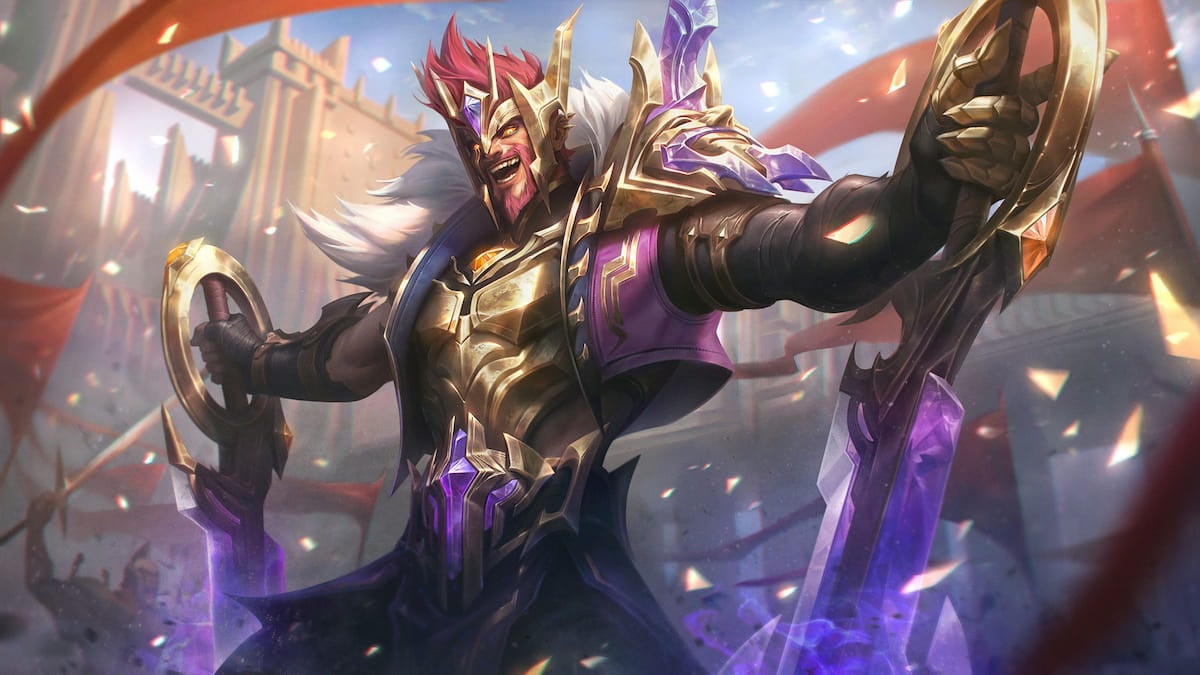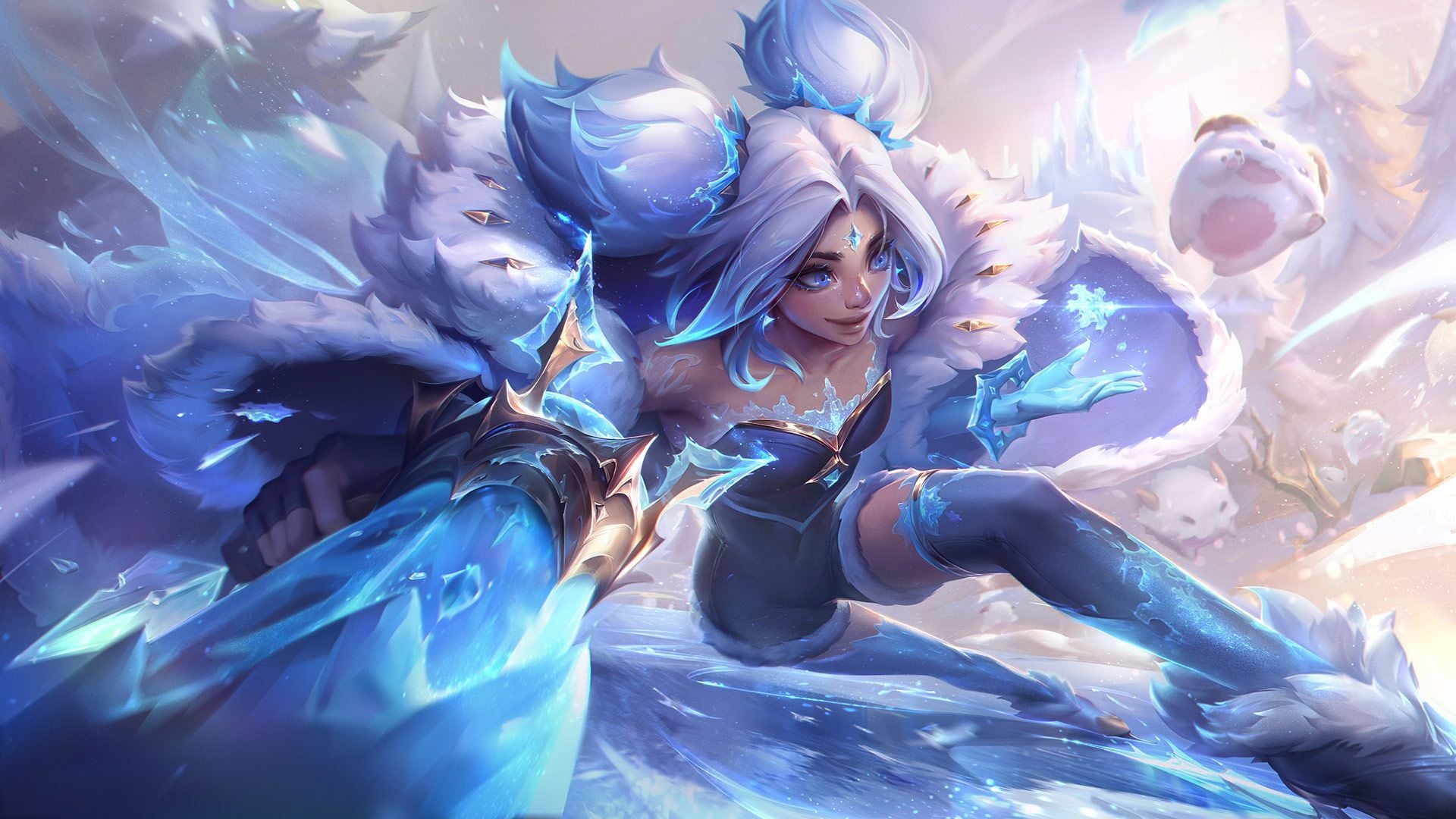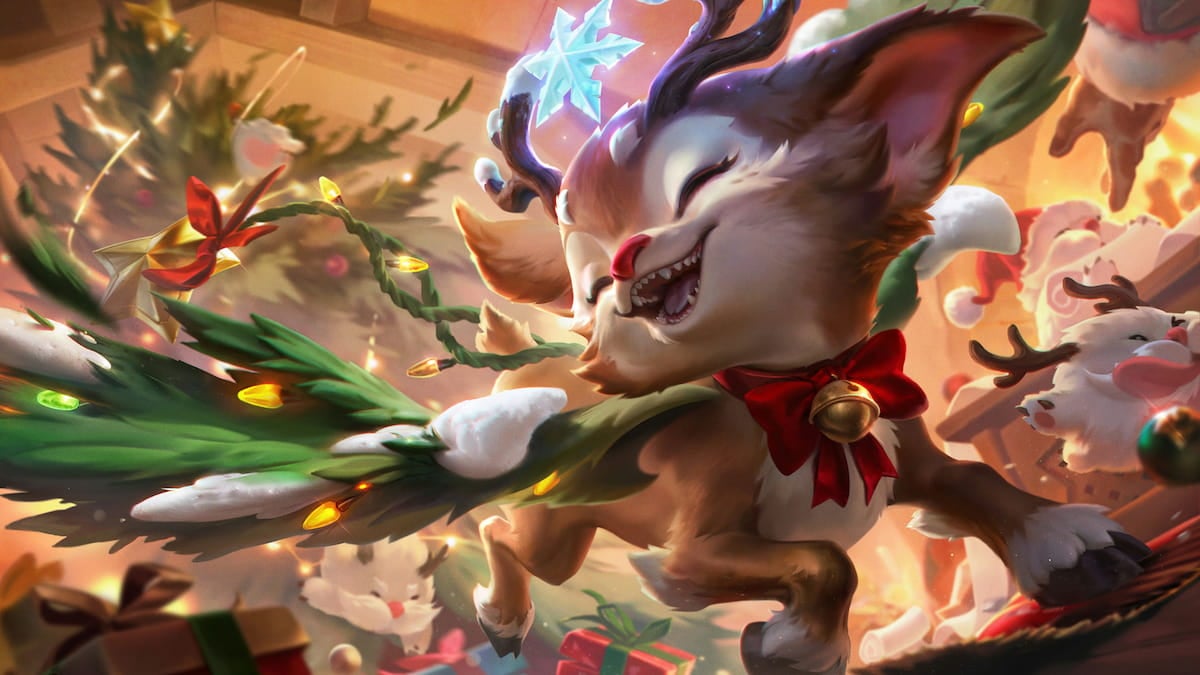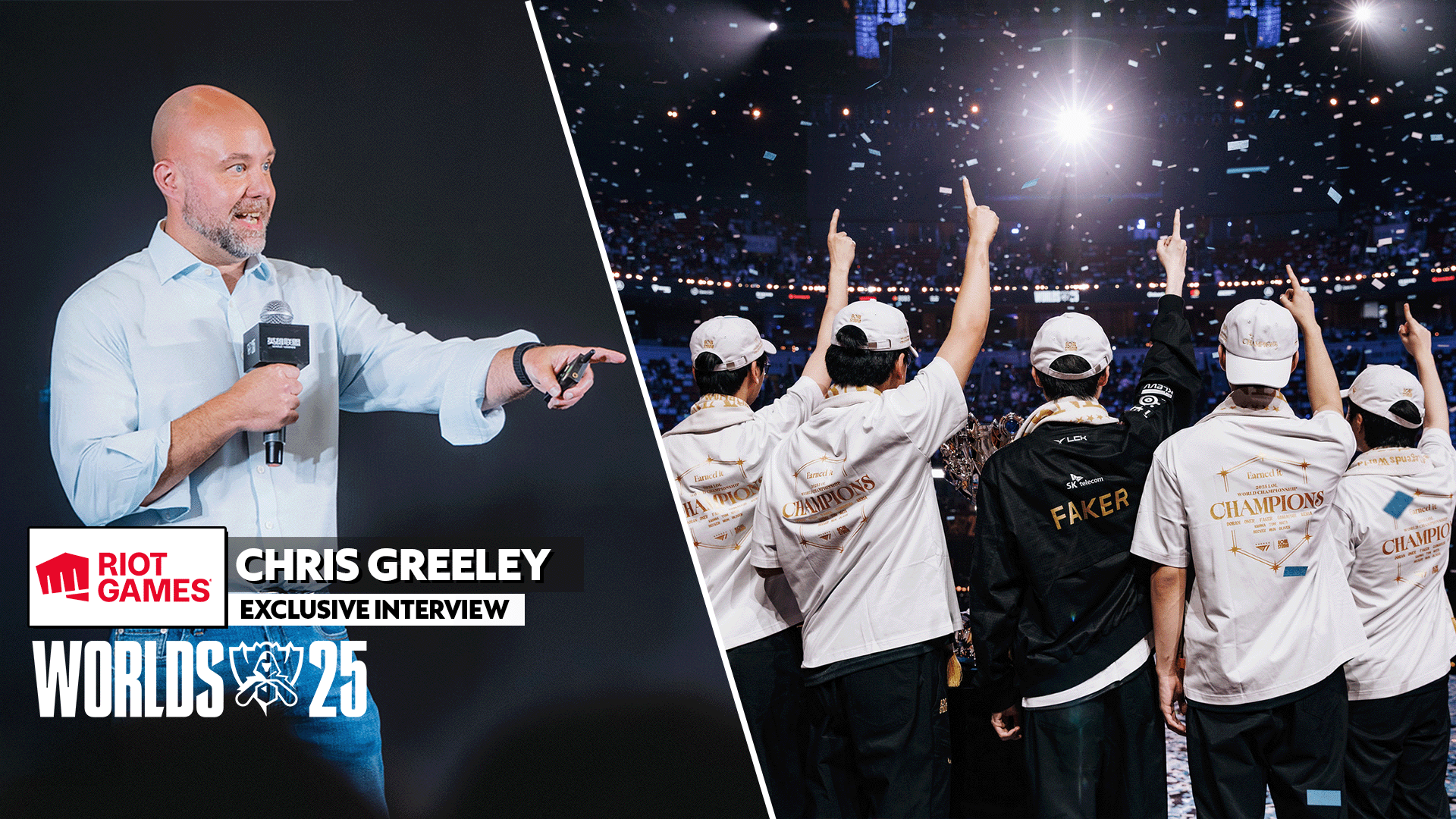Volibear, the Relentless Storm, is League of Legends’ latest reworked champion.
While Volibear’s core identity of a bulky initiator is the same, the champion got some new tools to remain threatening. Although he has a less than stellar 39-percent win rate among players newer to the champion in his debut week, Volibear still shows a ton of potential as a formidable pick for those looking to practice and add another tanky fighter to their repertoire.
Here are some important takeaways to learn when playing the newest iteration of Volibear.
Runes, abilities, and game plan
There are two keystone runes to consider when choosing Volibear: Aftershock and Conqueror. Aftershock is the more standard of the two, both in the jungle and top lane, since it allows you to fulfill your role as a tanky initiator much more easily. In the top lane, it gives your early-game skirmishes more protection and damage in short bursts revolving around the rune’s cooldown.
Conqueror is more for laning and it’s better for accentuating good matchups. Any prolonged battle lets you get more damage and sustain if you can consistently reach the maximum stacks of Conqueror.
These are the newest abilities that replaced Volibear’s older kit:
Passive: The Relentless Storm
True to his epithet, Volibear gains stacks of attack speed whenever he auto attacks or uses abilities. The maximum amount of five stacks allows him to conjure spreading AoE bolts through his auto attacks up to five enemies. If Volibear can’t maintain dealing damage after six seconds, the stacks fall off.
As shown in this clip, the chaining of lightning depends more on the positioning and proximity of enemies between one another, depending on who’s hit first as opposed to Volibear’s relation to every enemy around him. That means in teamfights, if you’re trying to maximize damage through passive usage, you can focus more on your own positioning and who you’re hitting as opposed to taking unneeded damage.
Q: Thundering Smash
Volibear’s Q is an auto attack modifier that stuns the opponent for one second when it connects. Similar to other auto attack modifiers, using this ability allows you to reset your auto attack timer. That means if you time it correctly, you can stack up your passive fairly quickly when you’re skirmishing with opponents.
W: Frenzied Maul
Frenzied Maul, Volibear’s W, is a targeted close-range spell that lets the champion deal damage to its target, triggering on-hit effects in the process as well. If Volibear can Frenzied Maul the same target again within eight seconds, he’ll deal extra damage to the target and heal himself.
This ability can serve as an extra cast for in-between your auto attacks. While it doesn’t serve as an auto attack reset, it gives you another action to do during the downtime between your auto attacks and Qs. If you can weave Frenzied Maul properly, you’ll be able to quickly stack your passive when fights begin.
E: Sky Splitter
As a long-range ground targeted spell, Volibear’s E can be used to poke out opponents and maintain your Relentless Storm stacks to prevent fall-off. The other main usage of this spell is that it also serves as a shield if you can get yourself in the blast radius as well. The shield scales based on your maximum health, which adds to Volibear’s tanky identity and emphasizes the importance of hitting not only your opponent, but yourself as well.
Sky Splitter is a spell without a cast time, so you don’t have to break your movement commands to line the ability up to hit you and your opponent. An opponent can’t see where the location of Sky Splitter’s circular bolt will land for the first second after it’s cast. They’ll know that you used the ability if they see your animations, though. So if you can cast this ability from fog of war, they’ll have less time to react to the spell.
R: Stormbringer
Volibear’s ultimate serves as your powerful initiation tool once you hit level six. Outside of serving as a gap closer, it also has the ability to disable towers. When a tower is disabled by this effect, it doesn’t reset aggro or damage ramp completely. So if you or a teammate is diving an enemy under tower and they don’t leave the tower range during the disable time, the tower will remember that it’s hitting its current target. To no longer be a target, the focused player must still properly leave the tower’s range.
As with most initiation and gap-closing tools, the best usage of this ability isn’t always at the start of the combat. If you can close the distance between you and your opponent by walking up slowly to them, it’s better to do that first. Doing this allows you to save this ability to get within reach if your opponent uses flash to try and escape or to retreat under tower. Unlike most other dashes in this game, you can’t change the hitbox of where you’ll land with it using flash.
Optimizing your early game: Jungle clear speed and laning
While the game recommends you start off with Hunter’s Machete, Hunter’s Talisman is a safer item. The main appeal behind this is that while the damage it provides is similar, the Talisman brings more sustain that you’ll get from multi-monster camps due to your passive.
The levels one through three skill rank order for early jungling should be W, E, then Q. Your W provides the most damage and sustain level one, E further adds to damage and sustain, and Q lets you pivot to either gank or clear Scuttlecrab faster.
One minor optimization you can do in the jungle is if you’re prioritizing clear speed and damage over sustain, you can maintain maximum Relentless Storm stacks between the Raptor and Wolf camp using your E.
As this clip shows, if you leash the Raptor camp out as you’re finishing it and you time your E properly, you can keep your stacks from the red jungle to the blue jungle by hitting the wolves and vice versa. While this may be flashy, there’s a lot of risk in doing it. If you mistime your E, you’ll miss out on keeping your passive stacks and you’ll lose the shield you would get by hitting E on yourself. This optimization is safer to go for when you have more items after your first back, so if you do make a mistake, you don’t lose too much damage or health.
When you’re laning, the easiest way to get an edge on your opponent is to always contest them with an Aftershock-enhanced Thundering Smash and with a fully-stacked passive. While setting up these conditions may sound difficult at first, you can get the latter by auto attacking minions before challenging your opponent with a Q. Be mindful of how often you do this strategy, though. Doing this will slowly push the lane to your opponent’s side due to the nature of your passive, which would make you more susceptible to a gank from the opposing jungler.
While your passive lets you rack up incidental damage against your opponent from far away, your lightning bolts that strike the enemy don’t give you free Conqueror stacks. If you go the Conqueror route, the easiest way to get maximum stacks for a fight would be hitting your entire combo. The combo to get five separate hits in is auto attack, W, Q, auto attack, and E connecting at any point. After doing this, Conqueror and The Relentless Storm should be active at the same time, letting you achieve a powerful point to contest your laning opponent while dueling.
Item paths, ganking, and the mid to late game
If you’re playing Volibear in the top lane, there are multiple ways you can adapt your item build. The best way to choose a route in terms of what items to buy is to look at the state of the game in how ahead or behind you are and determine if your team needs a sturdy frontline.
If you’re exceedingly ahead of your opponent in gold and levels, you can consider buying a Trinity Force as your first item since it adds bulk, damage, and cooldown reduction, allowing you to extend the lead you have over your opponent. Another damage item option to consider if you’re comically ahead that synergizes well with Volibear is Titanic Hydra. Due to the nature of how Volibear’s W works, and as another Afterward, you can add more bulk to your build by adding health and armor/magic resist depending on the opposing team composition. If the enemy team has more physical damage dealers, you can buy Deadman’s Plate, Righteous Glory, Randuin’s Omen, and Thornmail. If you’re facing a team that’s primarily focused on magical damage, you can get Spirit Visage or Adaptive Helm depending on the enemy champions.
If you’re jungling, completing your Cinderhulk Enchantment as fast as possible is your main priority since it allows you to improve your clear speed while giving you more damage during ganks, all while making it easier to tower dive. Afterward, you can choose either path similar to what was previously mentioned. If your team has no other frontline or if you’re behind your opponents in levels and gold then you should consider to continue building tanky. If you’re still ahead you can consider more bulky damage items.
During the mid game, you’ll need to constantly assess who you can tackle in a fight and force fights. Due to the nature of Volibear’s passive, if you’re ahead while laning, you can push your minions more easily to the enemy tower and then either tower dive with your ultimate or go to other lanes to have an impact across the map.
When the late game begins, especially when you’re tanking, you must decide if you need to initiate for your backline or peel for them. It’s a delicate balance that can be tough to achieve, but knowing your team’s win condition and who’s the strongest on your team is key to solving this dilemma. More often than not, you can swap these two roles on a dime in the heat of a teamfight due to your mobility with your ultimate and your Q combined.
Closing thoughts
One of the main weaknesses of the newest version of Volibear’s kit is that he’s still relatively straightforward and predictable for opponents, so figuring out how to try different angles of approach will also help players succeed with him. But this doubles as a strength in the new Volibear, since players that don’t have a strong tanky champion in their pool can look to the bear to understand the fundamentals of the role better.
While his low win rate may discourage players from attempting to try the new version of Volibear, putting practice into him to understand his toolset fully can pay dividends in the future. In addition to practicing the bear while he’s on the weaker side now, Riot is still looking at other avenues to potentially buff Volibear. This means committing to understanding and practicing with the Relentless Storm can reward you when buffs eventually shower him later.













Published: Jun 6, 2020 11:29 am